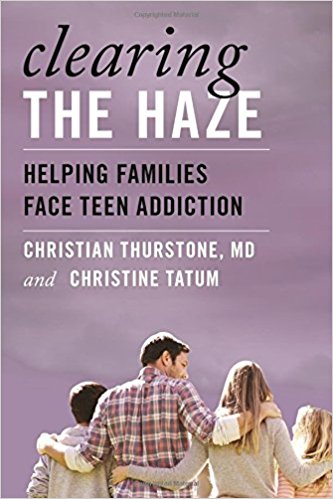Since mid-December 2012, Ed Wood has sent weekly e-mails to the Colorado legislature. Each one-page message focuses on a single issue related to drugged driving. Mr. Wood is an expert on the subject and ardently champions more sensible drugged-driving laws and enforcement nationwide. His own son was killed in a traffic accident caused by a drug-impaired driver.
I found this morning’s message from Mr. Wood especially interesting. Why? Because it challenges the research of Daniel Rees, a professor of economics at the University of Colorado Denver. I, too, am concerned about the quality of Mr. Rees’ research, which has made splashy news headlines trumpeting conclusions the data do not support. Also troubling is that Mr. Rees’ questionable work is often used to influence public policymaking regarding drugged-driving laws and marijuana use.
Here is Mr. Woods’ message, edited slightly for clarity.
One argument made by the marijuana lobby against HB13-1114 (a bill in the Colorado state legislature concerning penalties for people who drive while under the influence of alcohol or drugs) is that it is futile, because per se laws[1] don’t reduce impaired driving.
The lobby is basing many of its claims on the research of Daniel Rees, a local economist[2] who has become known for his pro-marijuana analyses. Mr. Rees has reported there is no evidence that drug per se laws reduce drugged-driving fatalities in a non-peer-reviewed discussion paper.
Failing to find an impact is not the same as finding there is no impact — especially with a study that lacks controls or sensitivity to isolate the impact of other factors. Traffic deaths declined by 25 percent from 2005 to 2010. There is no consensus as to why this happened — which demonstrates how difficult it is to track the impact of a single policy during this time period.
The National Highway Traffic Safety Administration has acknowledged there is little evidence that drug per se laws enacted by the states are effective at reducing drugged-driving fatalities. The NHTSA cites both the quality and variability of the various laws and the ineffective implementation of those laws.
For example, some states prohibit all scheduled drugs and their metabolites. Some prohibit drugs only in minors. Some prohibit only a small number of mind-impairing drugs. Some avoid including marijuana at all.
Yet, to support their thesis, Rees and his study co-author, D. Mark Anderson of Montana State University, pooled data from all of these states together — something that is statistically indefensible.
As to NHTSA’s comment on effective implementation of per se laws, we should understand:
- Alcohol DUI enforcement is eased by the availability of on-site breath testing technology that is fast, cheap and does not raise Fourth Amendment issues. No such technology is available for drugs.
- All peace officers are trained to identify alcohol impairment. Few are trained in the much more difficult task of identifying drug impairment. This is important because drug impairment manifests itself much differently than alcohol impairment, and Standardized Field Sobriety Tests (SFST) have been proven[3] to be insensitive in detecting impairment in chronic marijuana users. Colorado has fewer than 200 active DREs who are trained to recognize drug impairment, compared with more than 7,000 officers who are trained to recognize alcohol impairment.
Alcohol per se laws work — but it is not possible to sort out the effect of per se laws from the other factors that have caused drunk driving deaths to drop 48 percent between 1982 and 2009. Those other factors contributing to that drop in drunk-driving deaths include better enforcement tools, education, changing social standards and better car and highway design. In contrast, drugged driving is dealing with varied — and frequently weak — drugged driving laws, poor enforcement tools, ineffective education and social standards that are changing in favor of recreational drug use.
When conducting this research Mr. Rees ignored the success the U.S. Department of Transportation has found in its drugged driving per se restrictions for commercial drivers that rely upon pre-employment, annual, and random urine tests.
The point is that drug per se laws alone cannot be expected to turn the tide of increasing drugged driving deaths. But they are likely a prerequisite, as indicated by success with alcohol per se laws and commercial driver per se regulations.
Citations
[1] It is illegal to drive in the United States with alcohol in the driver’s blood exceeding a predetermined level. Any driver with a blood alcohol content greater than, or equal to, 0.08% BAC is per se presumed to be driving under the influence of alcohol. Such per se laws have been credited in part with the dramatic lowering of drunk driving rates in the United States. Similar laws in other countries have had similar effects, using even lower per se definitions of DUI.
Nevertheless, in 33 states, it is not unlawful to drive with any level of illegal drugs in the driver’s body. Many of these same states have gone further to legalize “medical” marijuana without first putting in place a per se law to define marijuana DUI.
[2] Anderson, D.M, Rees, D.I.; “Per Se Drugged Driving Laws and Traffic Fatalities”; IZA Discussion Paper No 7048
[3] Bosker, W.M., Theunissen, E.L., Conen, S., Kuypers, K.P.C., Jeffery, W.K., Walls, H.C., Kauert, F.F., Tonnes, W.W., Moeller, M.R., Ramaekers, J.G.; “A placebo-controlled study to assess Standardized Field Sobriety Tests performance during alcohol and cannabis intoxication in heavy cannabis users and accuracy of point of collection testing devices for detecting THC in oral fluid”; Psychopharmacology, May 13, 2012, DOI 10.1007s00213-012-2732-y



We welcome all thoughtful comments, but please abide by our commenting rules